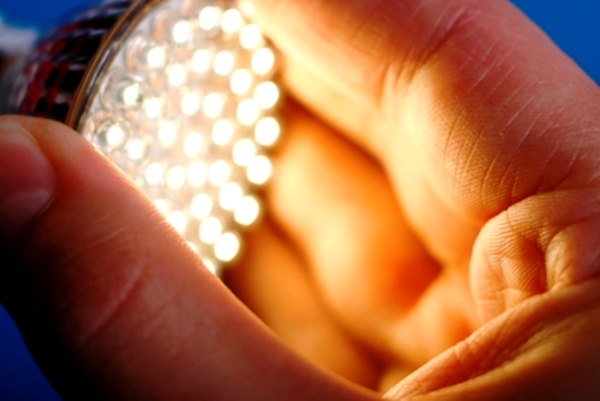Free shipping on orders over £50
TradeHURRY! SPRING SALE Now On! Get 10% Off Using Code KEEP10! Plus FREE SHIPPING On All Orders Over £50!
How LED Lights Differ From Ordinary Light Bulbs
 Since bursting onto the scene a few years ago, LEDs have grown – both in terms of overall performance and in sales too.
Since bursting onto the scene a few years ago, LEDs have grown – both in terms of overall performance and in sales too.
They’re the next big thing in lighting at a commercial and domestic level, but how do they differ from the industry standards?
The main physical difference is that LEDs belong to the SSL (Solid State Lighting) family, as they emit light through the use of a semiconductor material. You can find out more about this by taking a look at our LED anatomy blog post.
This differs from more traditional solutions, as they don’t use any kind of filament (incandescent, halogen), gas (fluorescent, neon) or plasma (arc lamps).
As a result, LEDs offer a number of advantages over their competitors.
Lower Energy Consumption
Using LEDs instead of incandescent bulbs can save you up to 90% on the cost of lighting in your home on bills, and this is because of how efficient they are.
LEDs use around 90% of their energy to emit light, with the rest lost to heat. In comparison, incandescent lights only use around 20% of their energy for light, with a whopping 80% lost to heat wastage.
This makes LEDs around 10 times more energy efficient and much cooler when they’re on, giving you massive savings as a result.
Longer Lifespan
 As LEDs operate at much lower operating temperatures than incandescent lights, there is less heat passing through the internal components. This puts far less strain on the unit and drastically reduces wear and tear.
As LEDs operate at much lower operating temperatures than incandescent lights, there is less heat passing through the internal components. This puts far less strain on the unit and drastically reduces wear and tear.
To add to this, the semiconductor inside an LED degrades at far slower rates than filaments.
The combined effect this has is that LEDs last much longer than other kinds of lighting. Most of our LED bulbs and spotlights last up to 50,000 hours. This is 2 times longer than most fluorescents and 20 times longer than a typical halogen bulb.
Better yet is that LEDs don’t fail abruptly too – they fade away slowly over time and will continue to work even at low output levels.
Less Radiated Heat
One of the less positive aspects of halogen bulbs is that they get very hot when they’ve been on for a while. This isn’t the case with LEDs though. As explained earlier, LEDs emit less heat as they use more of their energy to actually provide light – around 90%.
This means that LEDs are far safer to use even after they’ve been on for a while, and pose less of a fire hazard too. A bonus is that they won’t leave burn marks on your luminaires either.
Greater Durability
As mentioned above, LEDs belong to the SSL family, and don’t contain any fragile parts. This means they are a lot more resilient to shocks and vibrations.
Even a drop from a relatively small height can break the filament in a halogen bulb.
Greater Versatility
Wind the clock back 30 years, and LEDs were being used as indicators in electronic appliances. Today though, they’re being used in torches, cars, televisions, photography and general purpose lighting.
To get an idea of how truly versatile LEDs are, why not look at how architects use them to illuminate building exteriors.
We’ve got a team of experts on hand that can answer any further questions you might have about the advantages of LED lights – just give us a ring on 0116 321 4120 or email cs@wled.co.uk.






 Search
Search


